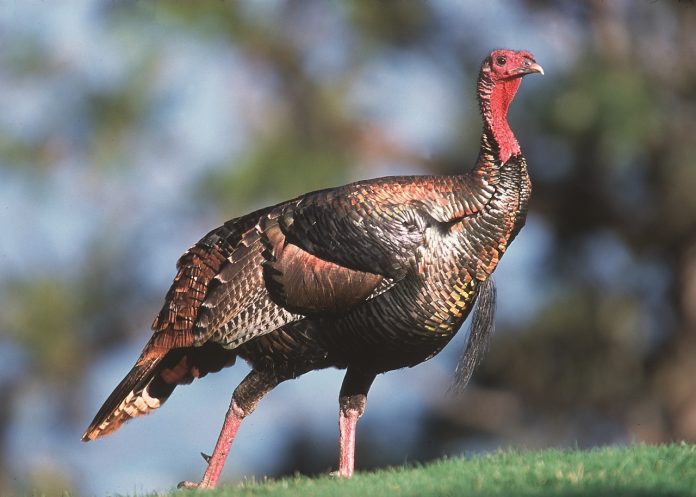COLUMBUS — Citizen scientists can participate in surveying Ohio’s wild turkey and ruffed grouse populations by reporting sightings in July and August, the Ohio Department of Natural Resources Division of Wildlife says.
Every summer, the Division of Wildlife conducts a turkey and grouse brood survey to estimate population growth. The brood survey relies on the public to report observations of all wild turkeys and ruffed grouse seen during July and August. Observations may be submitted at the Wildlife Reporting System webpage at wildohio.gov as well as the HuntFish OH mobile app.
Information collected for wild turkeys includes the number of gobblers, hens and young turkeys observed. Information collected for ruffed grouse includes the number of adults and young observed. The date and the county where the observation occurred are recorded for both species.
Biologists began tracking summer observations of wild turkeys in 1962. They added ruffed grouse to the survey in 1999. This survey is conducted by state wildlife agencies across the wild turkeys’ range, which includes Ohio. Information submitted to Ohio’s brood survey helps predict future population changes and guides wild turkey management.
In 2020, the public submitted 248 valid reports, with a statewide average of 2.7 poults per hen. The 10-year average is 2.6 poults per hen.
A true conservation success story, wild turkeys had disappeared from Ohio by 1904. Reintroductions began in 1956, and today, turkeys are again common throughout much of Ohio.
The gobbling of males is unmistakable, but the birds also make a variety of clucks and other sounds. Watch for turkeys in fields along woods, especially early in the morning. A few turkey hotspots include Hocking Hills, Killdeer Plains Wildlife Area and Woodbury Wildlife Area.
Ruffed grouse inhabit Ohio’s mostly forested regions. Grouse occur in greatest numbers in habitat with young, regenerating forests, especially those less than 20 years old. Habitat loss has driven population declines since the 1980s. In addition, susceptibility to West Nile Virus has likely caused further population declines during the past 20 years.
The drumming of a male grouse, which sounds similar to an old lawn mower being started, is made by the bird quickly rotating its wings, creating a vacuum that produces a repetitive, loud booming noise.
For more information, visit the Wildlife Species Guide page at wildohio.gov.










